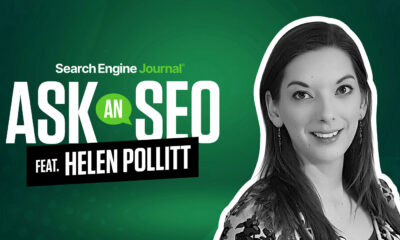MARKETING
How to Build Effective Location Pages

The author’s views are entirely his or her own (excluding the unlikely event of hypnosis) and may not always reflect the views of Moz.
Location pages are an important part of multi-location SEO for enterprises and SMBs alike, but they aren’t easy to get right. At best, they should give potential customers zero excuse to choose a competing business. Often, though, they struggle to provide unique value and offer essentially the same information as the home or service pages — but with a different city in the H1 and meta title.
This happens because unique content is hard to come by when every location does or sells the same thing.
The question isn’t, “How should I go about creating an awesome location page?”, but rather, “Am I giving customers enough unique value to even justify this page in the first place?”
If the answer is “no,” it’s time to find new opportunities for valuable content. Read on for ways to determine whether you’re offering unique value for your location pages, and how to make them better.
Is your content actually unique?
When it comes to building awesome location pages that will impress your customers and search engines, content is your most powerful tool. And I’m not just talking about words-on-a-page, paragraph-form content. Content is any information on your page, in any medium.
Regardless of the way you communicate to customers (text-based content, video, images, etc.), location page content will fall into one of three buckets:
1. Boilerplate
Boilerplate content can be copied and pasted across all locations and remain accurate. A brand’s mission statement falls into this category, for example. The good thing about boilerplate content is it doesn’t require much work to implement. It also doesn’t provide the unique value we’re looking for.
As a rule of thumb, use boilerplate content when it’s necessary (and it will be) but avoid creating pages where the majority of content falls into this category.
2. Technically “unique”
Let’s say you want to avoid duplicate content across location pages so you rewrite the same information (business description, services, etc.) over and over again. Voila! It’s unique, right?
Not exactly.
Technically, it’s unique — but it’s not saying anything new about that location. (Hence the quotation marks.) In other words, the content isn’t duplicative, but it’s also not that valuable. You’re simply using different words to relay the same message.
This type of content is, in my opinion, the worst of the three because it takes manual effort to create but isn’t more helpful to customers than copy-and-pasting the source material.
3. Unique value
The third, final, and best type of content is “unique value.” This content only applies to the location the page is about. It can’t be copied and pasted anywhere else because the value of the content is tied to the value of the location itself.
While this type of content takes a lot of work to create, it’s also the most helpful and should account for the majority of the content on location pages.
What should a location page include?
Creating enough unique value on location pages to outweigh boilerplate content isn’t easy, but it’s not impossible either. The following list includes content features that can add new layers of unique value to your pages — or close to it.
1. Paragraph-form content
Paragraph-form content is a great way to provide information to users about your location. When writing location pages, focus on information that is specific to the storefront the page is about. Here’s an example:
-
Diluted Value – “All of our locations have great customer service and we’re super passionate about offering [product / service] to people like you!”
-
Unique Value – “We’re located at the corner of [Street] and [Avenue] and a five minute walk from [Landingmark].”
There is a time and a place for “diluted value” content, but your goal should be to provide as much unique information as possible.
2. Location attributes and features
If you’ve optimized a Google Business Profile (formerly Google My Business or GMB), you’re familiar with location attributes. In short, these are a list of features that help customers plan their visit to your location.
If you’re not sure what to include in your attribute list, check your GBP and carry over any boxes you checked there. That said, don’t limit yourself to those items — feel free to add as many attributes as are helpful to your customers.
3. Staff profiles
One of the things that is (almost) always unique to each business location is the people who work there. Highlighting notable staff members’ profiles is a great way to show humans and search engines what (and who) to expect when they arrive.
4. Hours & NAP
Hours of operation and NAP info (name, address, and phone number) are the most basic form of unique content, but don’t forget to add them to your location pages. Additionally, make this information easy for customers to find on the page so they can get in touch or get directions quickly. NAP information can also be accompanied by an embedded map.

5. Photos
Photos on your location page (and GBP for that matter). Should be of the location the page is about. Avoid generic, santistized storefront images that aren’t of the actual storefront. Instead, include photos that show customers what they’ll experience at the store (inside and out).
Both of your audiences (humans and search engines) are very good at detecting these types of patterns and, should a website visitor become foot traffic, customers are more likely to be disappointed, confused, or frustrated if the photos don’t match reality.

It goes without saying that stock photos shouldn’t show up on your location pages, either.
6. Reviews
Think of reviews as user-generated content for your location pages.
When you add them, make sure you’re including ones specific to the location the page is about, as opposed to one feed of every review for every location.
The goal is to provide a realistic look at what potential customers can expect based on the past experiences of others. Additionally, reviews about the location itself (and only that location) add another layer of unique value to the page.
7. Products and inventory
I recommend adding product information or an inventory feed to every location page, even if the products offered at each location are the same.
Your customers only care if a given product or service is in stock near them, so inventory information is, in a way, another form of unique value content.
8. Nearby locations
Nearby locations are great if you have multiple storefronts in close proximity. They’re also another opportunity to add unique information to your location pages.
These can be added as their own module on the page or integrated with an existing map. I personally prefer to dedicate an entire page section to them to avoid confusion for readers who land on the page to get directions.

9. Offers and specials
Specials and offers don’t have to be unique for every location. I just wouldn’t make sense. That said, coupons and offers that are geographically relevant can be an opportunity to build additional value for local customers. Coupons, offers, deals, etc. by state or metropolitan area are one way to accomplish this.
10. FAQs
Frequently asked questions are one of my favorite ways to create rich, in-depth and unique content on local landing pages. I’ve seen a lot of businesses add FAQ modules to their pages, but I’ve also seen a lot of businesses only add generic questions and answers to those modules.
When adding FAQs to your local landing pages, ask questions that will elicit a unique response. Also, try to avoid yes or no questions, unless you plan to expound on the answers.
Generic:
Unique Value:
-
Question: “Can I get to {Location} from public transportation?”
-
Answer: “You sure can! We’re a five minute walk from the {specific} bus stop. Just head toward {street} and take a left at {street} and you’ll find us on the right.”
11. Departments and services
Departments and services are another example of content that can be unique, but isn’t always. For some business types (automotive dealers, for example), departments are clear: Sales, Finance, Repairs, etc.
For other business types, this content type isn’t as obvious. A bakery chain, for example, could include services in their location pages to highlight which locations offer wedding cakes versus their typical inventory.
Like inventory, the value of these departments or services comes from the fact that as a customer, I only care if the location nearest me offers the specific thing I’m looking for.

A few words about structured data
Schema (also called structured data) is code that tells search engines about your website content. Often, your customers won’t even know the schema is there — it’s strictly for search engines, with the exception of rich results.
Schema is important for two reasons:
-
Context: It helps search engines understand how the “things” that make up your business form a larger entity.
-
Specificity: It removes the natural ambiguity caused by keywords (and language).
If a website mentions the word “Avocado,” for example, it could be talking about the fruit or the mattress brand. Language alone isn’t enough to clarify without context. Marking up your content with schema removes this margin for error when it comes to Google understanding your content.
Structured data can also help you qualify for rich results like FAQs or review snippets for products.
Location page Schema best practices
When it comes to location pages, there are a few things you should keep in mind regarding schema markup.
First, make sure you’re using as many relevant schema types as possible. If you’ve optimized your page with unique images, FAQs, and staff bios, don’t add LocalBusiness schema to the page and call it done. Mark up every available item on your page to give Google as much information as possible. After all, search engines have to understand your content in order to index and rank it.
Second, use the most specific schema type available. Within the “LocalBusiness” schema category, there are 145 types of schema for specific businesses. Dentists, for example, should use “Dentist” schema instead of “Local Business,” and restaurants should use (you guessed it!) “Restaurant” schema.
Conclusion
Creating valuable location landing pages takes time, effort, and a bit of creativity. As you review the elements above, don’t gloss over the ones that seem the most difficult or time-consuming. That’s what your competitors are already doing.
Instead, prioritize the value you’re providing to potential customers because strategies that don’t scale may be your competitive advantage.



















You must be logged in to post a comment Login